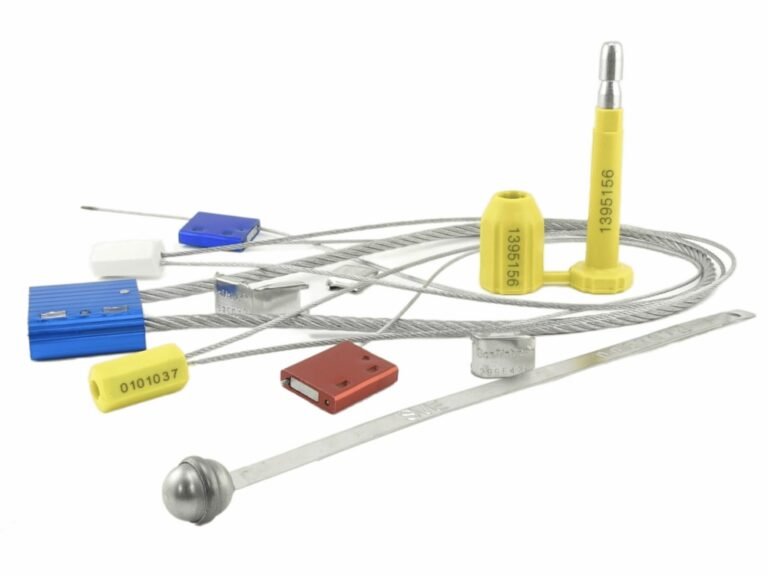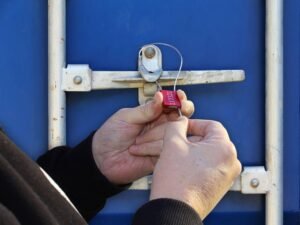
Security seals play a vital role in modern logistics, warehousing, and transportation, offering tamper-evidence and peace of mind across supply chains. Whether you're sealing cargo containers, utility meters, or high-value parcels, knowing how to handle seals correctly—from how to use and storing to removal and recycling—is essential for both security and sustainability.
This guide focuses on the best practices for three common seals: plastic security seals, metal security seals, and electronic security seals. Let’s take a look.
Plastic Security Seals
Plastic security seals are among the most widely used due to their affordability and versatility. You'll find them securing everything from courier bags and ballot boxes to truck doors and storage containers.
These seals are lightweight, easy to apply by hand, and often come with serial numbers or barcodes for traceability. They are typically designed for one-time use and are available in various types:
Pull-tight seals
Adjustable length for a snug fit around various items; ideal for securing bags, sacks, and irregularly shaped containers.
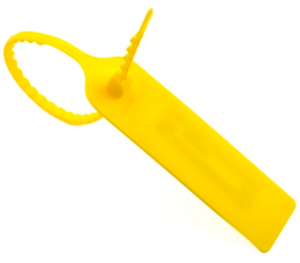
How to Use:
- Insert the tail through the locking chamber and pull until tight.
- Do not overtighten, especially on soft packaging or items that may be crushed.
- Record the serial number or barcode for traceability.
Fixed-length seals
Provide consistent locking strength and fast application; perfect for high-volume operations like logistics and cargo doors.

How to Use
- Push the strap end into the locking mechanism until it clicks.
- These seals lock at a specific length, so ensure correct size selection.
Breakaway seals
Designed for single-use tamper evidence; commonly used on airline trolleys, cash transit bags, and utility meters.
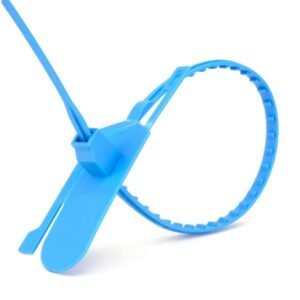
How to Use:
- Hand-tighten the seal by pushing the tail through the locking slot.
- Designed to be broken by hand—apply moderate pressure only.
- Log the seal ID if used in a traceable application.
How to Remove Plastic Seals
Use scissors or cutting pliers for pull-tight and fixed-length seals. Cut near the lock to preserve the serial number if required.
For breakaway seals, simply twist or snap by hand.
Wear protective gloves if handling sharp-edged fragments.
How to Store Plastic Seals
Store plastic seals in a cool, dry, and clean environment, away from direct sunlight, ensuring they are kept in their original packaging or organized bins, sorted by type and color, and applying a first-in, first-out (FIFO) system to prevent aging, brittleness, and ensure efficient usage over time.
How to Recycle Plastic Seals
Check with your local recycling facility to confirm if the specific plastic type (usually polypropylene or polyethylene) is accepted.
Metal Security Seals
Metal seals often meet ISO 17712 certification for high-security applications and provide a robust physical barrier against unauthorized access.
When strength and durability are critical, metal seals are the go-to choice. They’re commonly used for high-security transportation—like in customs, ports, oil drums, and bulk shipments. Two of the most popular types are:
Cable seals
feature steel wire and an aluminum or zinc body, ideal for adjustable security.
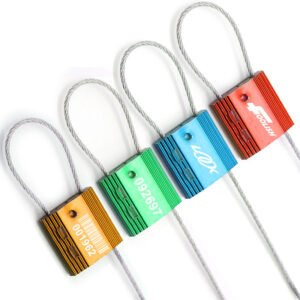
How to Use:
- Thread the steel cable through the designated locking point (e.g., container latch, valve).
- Insert the cable end back into the locking body and pull tight.
- Once inserted, the cable cannot be pulled back or reused.
- Record the unique serial number for verification and tracking.
Bolt seals
typically used for shipping containers, offering strong resistance to tampering and force.
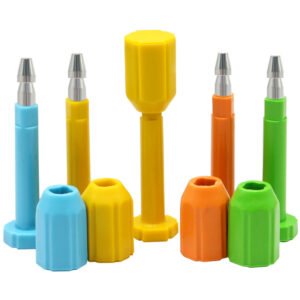
How to Use:
- Align the male pin with the female barrel through the hasp or latch hole.
- Push firmly until you hear a distinct snap, indicating a secure lock.
- Confirm that the seal number is clearly visible and properly logged.
- Some models may require manually writing down or scanning the code for chain-of-custody tracking.
How to Remove Metal Seals
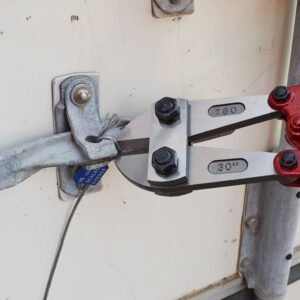
Use bolt cutters or heavy-duty snips depending on seal thickness.
For bolt seals, cut through the metal pin as close to the lock as possible.
Always wear protective gloves and goggles to guard against sharp fragments or recoil.
Collect used seals for metal recycling where facilities exist.
How to Store Metal Seals
Store metal seals in a dry, secure, and organized environment, away from corrosive substances, keeping them sorted by type and size in labeled compartments or bins for quick access, while avoiding stacking heavy items on cable coils to prevent distortion. Rotate stock periodically to ensure the seals maintain optimal performance, particularly in harsh environments.
How to Recycle Metal Seals
Generally recyclable as scrap metal. Collect in bulk and deposit at an appropriate metal recycling center.
Electronic Security Seals
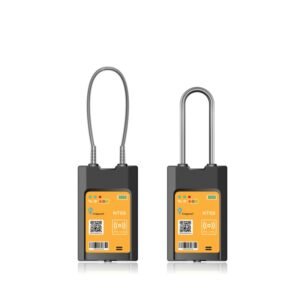
At the cutting edge of seal technology, electronic security seals (also known as e-seals or smart seals) combine physical tamper-evidence with digital monitoring features. These are especially suited for high-value or sensitive goods in transit.
How to Use:
- Attach the e-seal to the designated locking point (e.g., container, truck door, storage area).
- Activate the seal via the manufacturer’s method, such as a button, mobile app, RFID scan, or web dashboard.
- Ensure GPS tracking, tamper alert, and other functions are enabled and verified before transit.
- Log the unique digital ID and any relevant data into your system for traceability and monitoring.
- Confirm the seal is listed as "active" on the corresponding software platform.
How to Remove Electronic Seals
Deactivate the seal using the approved method, such as a mobile app command, RFID reader, or secure passcode.
Never attempt to forcibly remove or cut electronic seals unless in emergencies, as it may damage internal components or trigger alarms.
Reusable e-seals should be visually inspected for wear or damage after removal.
How to Store Electronic Seals
Store electronic security seals in a clean, dry, and static-free environment, keeping them organized in labeled containers to avoid damage to sensors or components, and maintain detailed digital records of usage, condition, and handling procedures to ensure long-term reliability and operational readiness.
How to recycle electronic seals
Check with your local recycling facility to confirm if the specific plastic type (usually polypropylene or polyethylene) is accepted.
Comparison of Security Seal Types
| Seal Type | Material | Use Case | Reusability | Security Level |
|---|---|---|---|---|
| Plastic Seals | Polypropylene / Polyethylene | Courier bags, trucks, ballot boxes | Single-use | Low to Medium |
| Metal Seals | Steel / Zinc Alloy | Shipping containers, drums | Single-use | Medium to High |
| Electronic Seals | Plastic + Electronics | High-value cargo, audits | Reusable | Very High |
Conclusion
Security seals are more than just tamper indicators—they’re a frontline tool in safeguarding your assets, ensuring compliance, and maintaining transparency. By understanding how to properly how to use, store, remove, and recycle them, your organization can improve both operational efficiency and environmental responsibility. Whether you’re managing a global supply chain or securing local shipments, well-handled seals make a world of difference.

